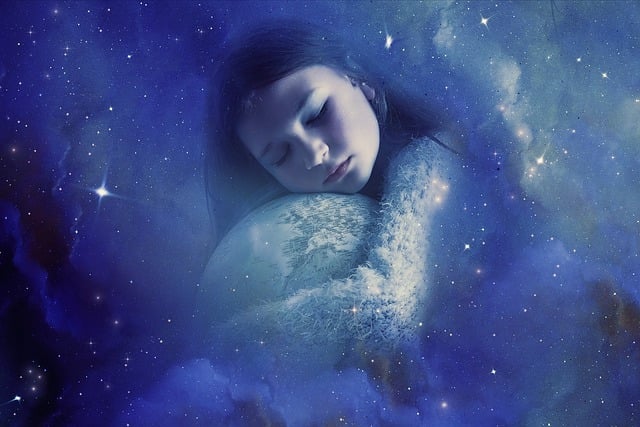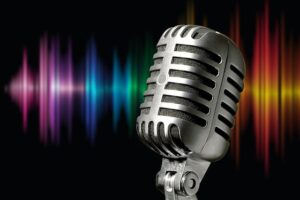Photo by Enrique Meseguer
Introduction
We’ve all experienced a noisy neighbor at some point in our lives. The person next door is playing loud music, or there’s construction going on outside. The sound is so annoying that you can’t concentrate on anything else because it fills your head.
But what if I told you there was a way to block out those noises with something that wouldn’t make you feel like you’re sitting in an empty room? You’d probably be very interested!
In this guide, we’ll look at the different kinds of noise and see which one works best for sleep.
“In sound we are born, in sound we are healed” ―
What about sleep?
If you’re looking for sleep, white noise maybe your best bet. White noise has been shown to provide the most restful environment because it mimics the sound of waves crashing on a beach or rain falling in the distance. Pink noise (a higher-pitched version of white noise) can also help you sleep if you find that regular white noise sounds too low for you—and it’s great for relaxation too!
Blue and black noises are best used during work or study sessions. Blue noise will help keep concentration on task by blocking out distracting sounds, while black noise is ideal when trying to relax and meditate.
White noise
White noise is the most popular noise, and for good reason—it’s great for sleep and study.
White noise is a combination of all frequencies, so it doesn’t have any particular pitch or tone. This makes it less likely to cause insomnia than other types of sound waves that contain higher or lower frequencies in their mix. If you find that other colors are too distracting for your needs and lead to an inability to focus properly on your work, then white noise is likely the best choice for you.
The prevalence of white noise in our lives can be seen through its many uses: from helping babies sleep at night to being used by many people as background music while they work on computers during the day or study at night.
Research demonstrates that white noise helps reduce anxiety in people who suffer from it, as well as insomnia.
Pink noise
Pink noise is similar to white noise, but has a slightly higher pitch.
It’s good for masking high-frequency sounds, such as ringing in the ears (tinnitus). It’s also good at masking low-frequency sounds, like traffic and air conditioners.
Finally, pink noise is useful for masking irregular sounds like footsteps or rustling leaves.
Blue noise
Blue noise is wonderful if you’re looking for a general purpose noise. It’s not as good at masking sounds than white or pink noise, but it’s still better than black.
But if you find white doesn’t suit your needs for sleep you may want to check out blue noise. When it comes to sleep masks and other tools used for falling asleep easier, many people swear by blue-colored sounds—and there are plenty of good reasons why they do so:
- Blue frequencies are soothing and relaxing, making them ideal for calming down after a long day at work or school. This makes them ideal when trying to fall asleep at night as well as reducing stress during the workday (which can also help with sleep).
- Since humans perceive low frequency sounds differently from higher ones—especially when we’re trying to relax—the lower harmonics found in blue frequencies aren’t as distracting as some other types might be (like pink).
- If you have tinnitus or any other kind of hearing loss that makes certain tones too harsh on the ears (especially higher frequencies), then listening through speakers rather than headphones may help make things easier on both ears without sacrificing quality!
Black noise
Black noise is also a beneficail sound for sleeping. Black noise helps you to relax, which can make it easier for you to fall asleep. Black noise also helps you focus on things that are quiet in the background, like your thoughts or dreams. Black noise has a wide range of frequencies: 20Hz-1000Hz, which is much more than white or pink noises.
As a result, it can be used to help you focus on specific sounds and to block out unwanted noises.
But if you’re trying to get some sleep, white noise maybe the best to experiment with first.
We recommend experimenting with different sounds as each person is unique. However, if you’re wanting to awaken early and refreshed with a good nights sleep, white noise is likely your best choice. It’s a tone that’s similar to the sound of waves crashing on a beach or rain falling on leaves. White noise is used as a treatment for tinnitus, which is ringing in your ears.
Black and pink are also good choices if you want to focus while working or studying, but they may not help you relax as much as blue or white noise would.
If you’re trying to sleep, black or pink noise can help block out distracting noises and help you fall asleep faster. It’s also a good option if you have tinnitus or find yourself waking up with a headache after using white noise.
Conclusion
Hopefully, this guide has encouraged you to experiment with different niose color variations and to help decide which type of noise is best for your needs. If you’re trying to get some sleep, white noise will likely be the best. If you want to meditate or relax in general, we recommend using pink or blue noise—or even black. Happy expirimenting and sweet dreams!
“Work with sound until you’re absolutely amazed that you can produce such a sound and it seems to you that you are just the instrument through which the Divine Pied Piper blows the whisper of the incantations of his magic spell. Become yourself a pure vibration beyond space. If the sound generated by the vocal cords into the vibratory network of the Universe has the faculty of tuning one, it is because it links one with the cosmic symphony. The repetition of a physical sound sets off a sound current. A vibrational tidal wave in the ether by building up energy. You must become pure vibration and pass on through to the other side.” -Inayat Khan, The Music of Life
The following is a transcript and video for “White vs. Pink Noise: Which Will Help You Sleep Better?”
Some people need a little noise in the background when they’re trying to get to sleep. If you’re me, that means putting on Futurama in an endless loop until you know every episode word for word… in your sleep. But if you’re a normal, healthy, functioning person, you might turn on some white noise.
It turns out, though, there are more “colors” of noise, like pink, blue, and brown. How are these colors different, and what do they do to your brain while you sleep?
Obviously sound has no color, unless you have synesthesia… in which case, awesome. But in this case it’s helpful to use colors as an analogy for the spectrum of frequencies in noise.
White light has all the colors of the rainbow equally represented, which is why it doesn’t look like any one particular color. Likewise, the frequencies in white noise are all equally represented, with the lowest audible frequency at 20 Hz having the same power as all the frequencies above it, up to the highest frequency humans can hear, at 20,000 Hz.
White noise sounds like this: [KSSSCK]
There are natural sources of white noise, like steam hissing from a radiatoror static from a TV. But if you’re all modern with your gas furnace and digital TV and still can’t sleep, then you can buy a white noise machine. Because white noise is all frequencies, it can help mask other noises, like the ringing of tinnitus or the sound of your girlfriend snoring… Katie.
But humans don’t hear all frequencies equally. The distance between 30 Hz and 60 Hz sounds the same as the distancebetween 10,000 Hz and 20,000 Hz; to us, both notes are one octave apart. And we’re more sensitive to high-pitched noises, like babies crying.
Enter pink noise. Unlike white noise, the energy in pink noise is highest for the low frequencies, and is halved every time the frequency doubles, meaning every octave has equal powerand the net effect sounds less bright, and more balanced, than white noise.
Here’s white noise again: [KSSSCK]
And here’s pink noise: [WHOOOSH]
While white noise is by far the most researched noise color, pink noise studies are on the rise recently. One from 2012 found that participants who listened to pink noise while they slept showed an improvement in deep sleep, and reported sleeping better.
During deep sleep, the neurons in your brain are firing slowly, what’s known as the delta brain wave pattern. As we age, we don’t get as much deep sleep, which is associated with memory problems.
So, a 2017 study played bursts of pink noise in sync with the delta brainwave to older adults, and found the waves increased in amplitude, and participants performed up to 30% better on memory tests. Why? Well, scientists are just beginning to explore the connection between sound and neural activity, but one thing’s for sure — the key to the results is timing, so if you’re Philip J. Fry and don’t have a delta brainwave, you’re out of luck.
That was a Futurama deep cut – y’gotta get on my level. The only other color noise that has an official Federal Communications standard definitionis blue noise, which is like the opposite of pink noise, where higher frequencies are amped up. Wanna hear the most annoying sound in the world? [HISSS]
Unofficially, there’s also grey noise, where the high AND low ends are emphasized: [THURSSS] and Brown noise, where the frequencies mimic the randomness of Brownian motion: [WISSSH]
Now, if you said that means the Brown noise is named after a person, not a color, you are you are technically correct… which is the best kind of correct. (Disappointingly, it has nothing to do with the mythical pitch that will make someone poop their pants.)
There are even more sounds I don’t have time to touch on, but it turns out there are a lot of colors of sound, and they have some surprising applications and effects that research is just starting to explore. So if you love science, make some noise!
[KSSSCKWHOOOSHHISSSTHURSSSWISSSH]






